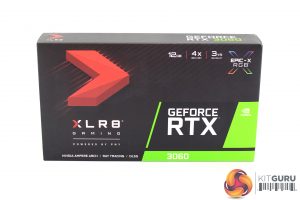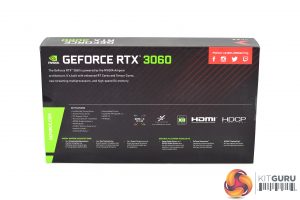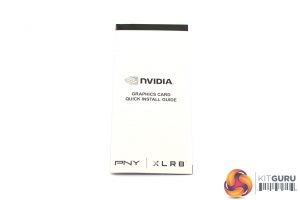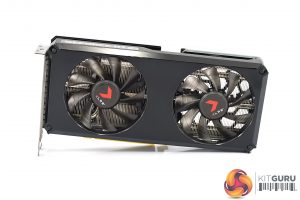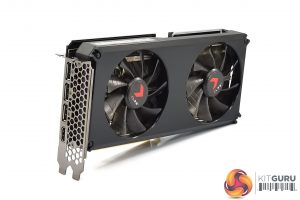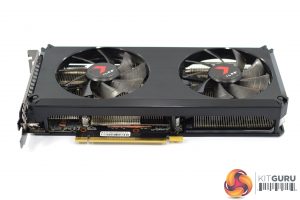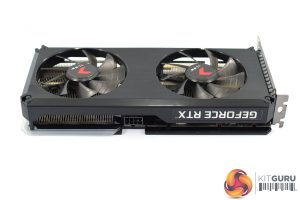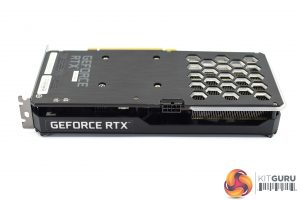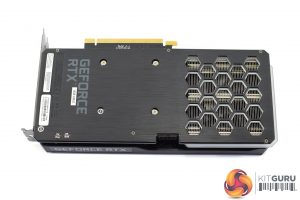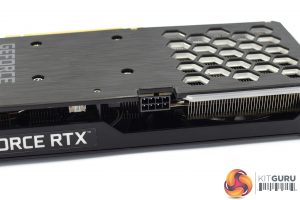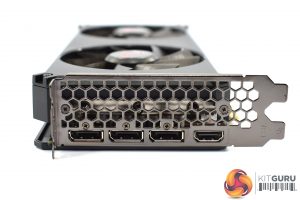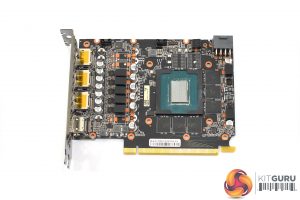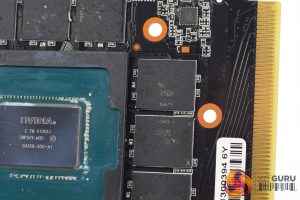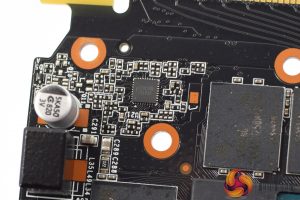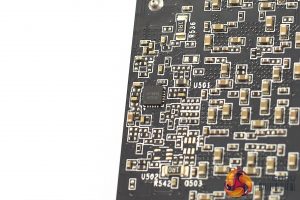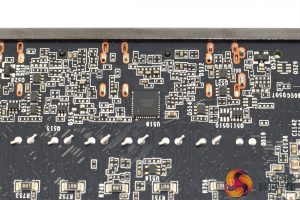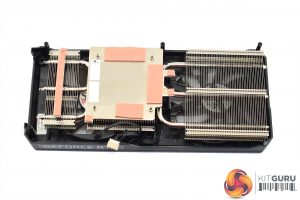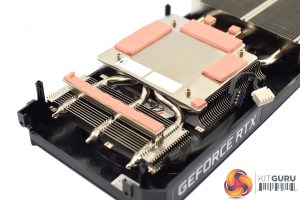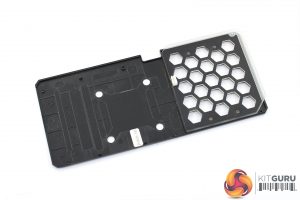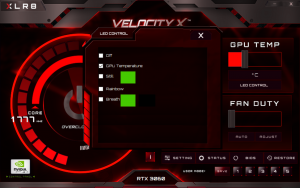The PNY RTX 3060 XLR8 Gaming ships in a black box, with the XLR8 logo on the front. On the back, PNY highlights the key specifications of the GPU.
The only included accessory is a small quick installation guide.
As for the design of the card, it's a pretty understated overall appearance. The shroud is made of matte black plastic, sporting a brushed effect design. The two fans measure 90mm across, with just a hint of colour coming from the red XLR8 sticker on the fan hubs. There's not a whole lot to say other than that – some might like this, as it's not a flashy or eye-grabbing card, but you could also argue it is a bit on the plain side.
In terms of dimensions, it measures 246.9mm x 119.9mm x 39.9mm, making it a very compact dual-fan card by modern standard. It's obviously not as small as Palit's single-fan StormX OC model, but compared to something like the MSI Gaming X Trio this PNY card is significantly smaller.
Looking now at the back of the card, we can see a plastic backplate, again sporting the same brushed effect design as on the front of the shroud. We can also note several hexagonal cut-outs to allow direct airflow through the heatsink.
Power is delivered by a single 8-pin PCIe connector, which is more than enough for the RTX 3060 – with a TGP of 170W, up to 150W is delivered through the power connector with another 75W through the PCIe slot.
Display connectors, meanwhile, consist of 3x DisplayPort 1.4 and 1x HDMI 2.1.
In terms of the PCB, we can see the design is identical to that of the Palit StormX OC, so both are likely just using Nvidia's reference design without any modifications. That means we find a 5-phase VRM for the GPU, using UPI's UP9512R controller and OnSemi 302045 MOSFETs. The memory VRM is 2-phase, using UPI’s UP1666Q controller alongside Sinopower 7342EK MOSFETs.
As for the cooler, this is comprised of three separate aluminium fin stacks, connected by three 6mm heatpipes. A large baseplate is used to contact both the GPU and the memory, while one smaller plate is used to cool the GPU VRM, via some pink thermal pads.
The backplate is made of plastic and does not contact with the back of the PCB.
The XLR8's RGB lighting is controlled with PNY's Velocity X software. Visually it is very clunky with low-resolution text, and the number of RGB modes are limited. There's the option to have the lighting react to GPU temperature, set a static colour, and then rainbow and breathing modes.
The colours and brightness actually look good, but the lighting is let down by the lack of fine control.
Be sure to check out our sponsors store EKWB here
 KitGuru KitGuru.net – Tech News | Hardware News | Hardware Reviews | IOS | Mobile | Gaming | Graphics Cards
KitGuru KitGuru.net – Tech News | Hardware News | Hardware Reviews | IOS | Mobile | Gaming | Graphics Cards


